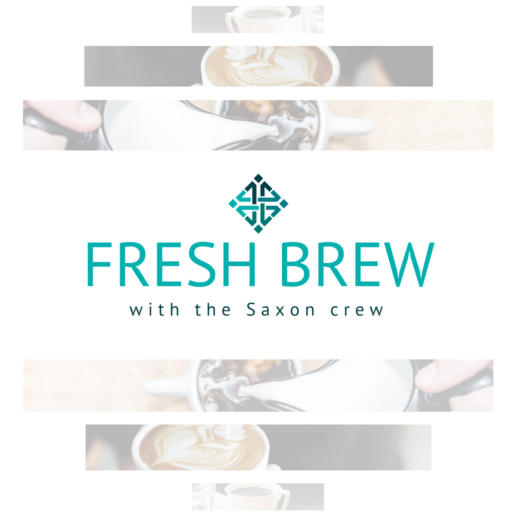4 benefits of positive recognition to boost employee engagement
As both employers and employees are facing difficult times both in their work-life and home life due to the circumstances that the coronavirus pandemic has brought into the world, it's important that the negativity does not take place of the positivity needed. Positivity is powerful and can play a critical role in the workplace. Read this blog post for four benefits of positive recognition.
With all that’s happening, it’s easy to become overwhelmed with the negativity in the world. Our emotional state is important at work. Positive emotions transform our minds and increase our ability to bounce back from hard times.
The power of positivity should not be overlooked, and recognition plays a critical role in generating these emotions in a modern workplace. Open acknowledgement and expressed appreciation for employees’ contributions can go a long way.
Improve employee retention
The first benefit of positive employee recognition is improving employee retention. In fact, according to industry analyst Josh Bersin, companies that build a recognition-rich culture actually have a 31% lower voluntary turnover rate.
Gallup research on recognition also shows that employees who don’t feel recognized at work are twice as likely to quit within a year. In today’s current environment where many organizations are driving more productivity with fewer employees, leaders need to ensure that they’re not forgetting to focus on employee retention. You’d be hard-pressed to find an organization that isn’t concerned about retaining top talent right now; top performers will find new opportunities even when they’re hesitant to move.
Creating a workplace where people want to stay isn’t just beneficial for employees; it’s also good for the bottom line. Turnover cost can be difficult to compute, but I challenge you to consider the costs of recruiting, onboarding, training, and the lost institutional knowledge that comes with poor retention.
Increase employee engagement
The second benefit that is particularly important right now is increased employee engagement. Our own research showed that 84% of highly engaged employees were recognized the last time they went above and beyond at work compared with only 25% of actively disengaged employees. We also found that while 71% of highly engaged organizations recognize employees for a job well done, only 41% of less-engaged organizations did so.
Positive recognition is powerful and has a clear tie to engagement. Yet, many organizations still do not adequately measure engagement. When was the last time you measured engagement with your own team? How much opportunity is there to improve through recognition?
Boost employee morale
The third benefit of positive recognition is boosted morale. I already mentioned the transformative effect of positivity, but the simple act of thanking people can make a tremendous difference. When employees were asked about their experience at work,70% said that motivation and morale would improve “massively”with managers saying thank you more.
How did you feel last time you were recognized?
Positivity has an important impact on employees, but it also pays literal dividends to companies that have figured out how to encourage it. Research from author Shawn Achor shows that happiness raises sales by 37% and productivity by 31%. Consider ways you can encourage your team to recognize each other more often.
Leverage peer recognition
It turns out that peer recognition massively outperforms top-down recognition. Peer recognition occurs when individuals give and receive recognition from their peers, managers, and direct reports.
Being recognized by colleagues is incredibly powerful for employees, especially when it’s done publicly. Peer recognition is 36% more likely to have a positive impact on financial results than manager-only recognition, according to SHRM. Managers can’t see every positive action that occurs, so think about how to encourage everyone to participate in recognition of great work across the entire organization.
SOURCE: Crawford-Marks, R. (14 September 2020) "4 benefits of positive recognition to boost employee engagement" (Web Blog Post). Retrieved from https://www.employeebenefitadviser.com/list/4-benefits-of-positive-recognition-to-boost-employee-engagement
3 tactics to navigate company culture in a remote world
In many respects, COVID-19 reframed our thinking about worklife balance. While this was already a fatigued concept, the pandemic and resulting quarantine fully demolished the fourth wall that stood between work and the personal lives of our team members.
In the early weeks, given our technology enablement already in place, a near immediate shift to fully virtual didn’t seem like a huge shift for many. As the weeks wore on, working parents and those with different challenges at home felt the effects almost immediately. As a working mom myself, I have first-hand experience around what it means to be a mom and an employee at the same time and in the same space, along with my partner also working from home. In fact, my daughter may or may not have “Zoom bombed” a session with our board. Of course, none of them were bothered by it and it probably embarassed me more personally than anything.
As the chief people officer of SailPoint, I’ve seen how balancing continuing to educate our children from home while working full time has taken a toll on many. Half of our workforce have children under the age of 18 living at home. To move forward as a distributed workforce in a way that is sustainable and productive, HR teams need actionable steps to empower today’s working parents.
By implementing specific guidelines that help employees navigate these waters, HR teams can better instill confidence in their employees and provide them with the resources required to drive successful and productive engagement. Small changes, simply starting with an acknowledgement of this issue, helps teams to get their work done on the terms they’re able to design to best fit their needs.
Give employees the formal gift of time
When the pandemic began earlier this year, SailPoint’s approach was centered on “returning to normal.” It’s clear now that a return to normal is not in the cards, and organizations should look at this time as an opportunity to rebuild and create lasting culture changes through new programs and initiatives.
One strategy we’ve found successful at SailPoint is implementing a 2-hour block twice a week when employees have no meetings and can focus on what is most important to them individually. This could range from taking care of their children to getting a presentation done that they haven’t had time for, or even scheduling personal appointments. Whatever it may be, this block we call ‘Free2Focus’ is about giving our crew space to balance the personal demands with the work demands. So far, the response to this time block has been very positive and it allows SailPoint crew members to use their time during the day how they wish in a flexible but formal way. Some crew members are using this time to focus on helping their children with school work, others have used it to have lunch with loved ones. Given that much of schooling from home may fall to women, we also look at this as an inclusion initiative to ensure that part of our workforce isn’t faced with a choice of one or the other.
Restructure your physical office
One aspect of corporate culture that was long overdue for restructuring is the use of the physical office space. At SailPoint, we’ve always offered our crew members flexibility, and this extends to trusting them to decide where they work. We believe that work is our identity, not our cubicle, and COVID-19 has presented us all an opportunity to rethink the office space.
As of September, we have allowed crew members to voluntarily return to the office if they wish at 25% capacity. Moving forward, we’re asking the crew to think of our offices like they would a college library. In college, you would likely go to the library for a place to focus or a place to meet with otehrs. This is how we want the SailPoint offices to operate because we know our crew makes the most impact when they have the autonomy to make their own decisions that work for the individual, their family and their work. There is not a one-size-fits-all when it comes to working styles and personal situations, which is why we want our physical office space to be as flexible as our remote office space.
Commit to community
While this time may have brought us closer to our families, it can be isolating from an employee culture perspective. Some of us are lucky enough to have family support at home, but many do not. It’s crucial that those looking for companionship and emotional support are able to find it, within our community.
Having a strong culture in place is not only invaluable for the individual’s well-being but also vital in keeping employees engaged and motivated. One strategy to achieve this is taking advantage of the technology that connects us. At SailPoint, we have several Slack channels that aren’t related to work to keep our community connected. We have channels for parents, pet lovers, beauty gurus, Texas Longhorns and more, but we also have a channel called SAIL ON. This particular channel is a place for people to post supportive messages, or to just have fun and connect with their community of crew members. So far, this initiative take on a life of its own, as we’ve seen our crew organize fitness competitions, build standing desks for each other’s homes, share their thoughts on "Feel Good Fridays.”
SOURCE: Payne, A. (23 October 2020) "3 tactics to navigate company culture in a remote world" (Web Blog Post). Retrieved from https://www.employeebenefitadviser.com/list/3-tactics-to-navigate-company-culture-in-a-remote-world
Three keys to creating remote team chemistry
The chemistry between team members is often a key building block in successful communication and growth. Now that most workplaces are working remotely and team members are not face-to-face each day, creating a powerful and positive team takes a more delicate approach. Read this blog post to learn more.
Scottie Pippen once said, “Chemistry is a very important element for any team that wants to be serious about winning.” As a six-time NBA champion, Pippen knows a thing or two about winning. His chemistry with Michael Jordan and the Bulls’ supporting cast created one of the greatest dynasties in sports history.
Chemistry — the way teams work together — has always been the X-factor in success stories. Today, in a world where working from anywhere is becoming the standard, creating and harnessing chemistry is newly challenging but just as important as ever.
One of the great challenges of working remotely is replicating the interactions and relationships that develop naturally in a physical office. Camaraderie and morale, huge factors in developing positive team chemistry, can’t be forced. Chemistry isn’t quantifiable or trackable; it’s an organic quality that changes over time, much like company culture. Leaders can’t force chemistry to happen nor should they try. Instead, creating a powerful, positive team chemistry remotely takes a more delicate approach.
When it comes to chemistry building, consider being both active and passive. If you’re too active in promoting bonding and friendship, your efforts may end up ringing hollow. If you’re too passive, you won’t know what’s going on with your team. A healthy remote management style will go a long way in promoting chemistry but won’t get you all the way there. You have to supplement good managerial practices with procedures designed to promote trust and kinship between team members.
Create a space for chemistry
One of the first steps to establishing remote chemistry is to provide people with a space to talk about non-work matters. When you had an office, this space already existed in the form of hallways, breakrooms, the moments before and after a meeting, and more. Creating a virtual water cooler (you can even set specific hours for it in Zoom) will encourage people to discuss their lives outside of their careers. These discussions bring people together, making them more likely to trust and rely on one another.
Better than just providing a space for these talks is giving folks something to talk about. Creating a book club, fantasy football league or TV-watching group will ensure that people will have common experiences to talk about. If you want to go full meta, you could even watch the Emmy-winning documentary series “The Last Dance” about the Chicago Bulls and discuss team chemistry itself.
Welcome new team members
If you’ve added new employees during 2020, you know how hard it can be to make them feel like a part of the team. Odds are, new hires have never met the people with whom they are most closely collaborating. It’s not hard to see how that could create a problem. To avoid a world where new team members feel like anonymous hired guns, you have to actively create warmth and kinship.
New hires should receive both formal and informal introductions to their new coworkers. A structured meet and greet will allow people to learn quick facts about each other, work preferences and other essential details. A virtual happy hour will give people a chance to get to know each other in a less rigorous way. By the end of a new employee's first week, they should have experienced both.
Share challenges and victories alike
Nothing brings people together like shared experiences. When you go through a tough client experience with fellow team members, you grow closer to them. When somebody helps you on a project that yields great results, you trust them more than you did before. The essential value of team chemistry comes from a sense that you’re all in this together. To make people feel that way, you have to let them talk about what they’re going through.
Talk about Zoom fatigue. Talk about the clients who struggle to accept a tech-heavy reality. Talk about what’s working and what isn’t. Talk about how hard it is to juggle a family and work with everyone under one roof. Talk about it all. When it comes to team chemistry, conversation is never an enemy.
SOURCE: Vetter, A. (05 October 2020) "Three keys to creating remote team chemistry" (Web Blog Post). Retrieved from https://www.employeebenefitadviser.com/list/three-keys-to-creating-remote-team-chemistry
Working from home in a pandemic is not shirking it
Juggling work and personal lives was a challenge before the coronavirus pandemic, but now as many are still continuing to work from home, employes are beginning to become worn down from having to manage their home life and work-life all at once. Read this blog post to learn more.
Working from home, once jokingly dismissed as “shirking” from home, is back as a pandemic lifeline for economies amid a resurgence of COVID-19 cases in Europe. Governments in Britain and France, having goaded workers back to the office after lockdown, are now urging them home again. The sound of frustrated bosses gritting their teeth can be heard across the City of London, as big firms from Goldman Sachs Group to Citigroup pause the back-to-work push while keeping the office open.
There’s a sense of whiplash among white-collar workers, who just weeks ago were told that it was time to put the economy first and get back to their cubicles and open-plan desks. There should also be palpable relief. Being able to pull in a salary while safe at home is a privilege hospital staff, care workers and supermarket cashiers can’t have.
Still, we know from the first wave of lockdowns that those stock images of remote workers logging on from bed with a smile and tousled hair, or of barefoot parents deftly bouncing toddlers on their knee while firing off an email, are a fantasy. While surveys suggest working from home is popular among employees crushed by the grind of the daily commute, the grumbling of CEOs that productivity and company culture are vulnerable isn’t entirely wrong.
The mass push to work from home earlier this year was unprecedented. It represented an estimated 42% of the U.S. labor force (or more than two-thirds of economic activity when weighted by contribution to GDP), but it had drawbacks. The apparent productivity gains of being at home instead of on the subway began to look more like the result of a steadily lengthening work day, according to multiple network operators, rather than supercharged efficiency.
Juggling Zoom calls and childcare made matters far worse, one reason governments in Europe put so much emphasis on reopening schools this fall. “We are home working alongside our kids, in unsuitable spaces, with no choice and no in-office days,” Stanford economist Nicholas Bloom said in March as he warned of a looming “productivity disaster.” He’s usually much more positive: His past research has linked working from home to a 13% rise in performance and a 50% drop in employee departure rates.
While corporate bean counters dream of one day dumping costly commercial real estate for digital offices in the cloud, the reality of the cost of living in big cities means home offices aren’t up to scratch.
More than half of Americans working from home do so from shared rooms or bedrooms; more than one-third have poor internet connections or none at all. A June survey of Japanese workers found that even among early adopters of remote work, only a third found it more productive than working in the office, citing poor equipment. Deutsche Bank AG’s monthly survey of financial-market professionals found their assessment of whether they were on balance more productive or less productive at home declined from 20% in June to 11% in September. (It had plunged to -13% in April as everyone was forced home full-time all at once.)
That’s the short-term assessment. We don’t yet have evidence of mass remote work’s impact of longer term on company productivity, but the current outlook is mixed at best. It’s hard to see how the field of research and development — already being thinned out by recession-related cuts — is going to win out in this environment.
Given there’s little freedom right now to create a hybrid model combining office and home — the preferred option for the majority of workers surveyed at French carmaker PSA Group, for example — bosses should do more to make the work-from-home experiment palatable and safe for all involved. Subsidizing utility bills, workspace equipment like ergonomic chairs, and even expenses such as rent (as one Swiss firm was ordered to do in May) would increase satisfaction. Managerial habits should also change, with more trust given to employees, if companies are serious about attachment to “culture.”
The right to disconnect, which had begun to spread worldwide before the pandemic, is critical. The output gains of remote work come from contented and engaged workers, not the cheaper transaction cost of being able to hire, fire and manage via the Internet.
None of this is to idealize the world of physical offices, so easily skewered by the likes of Scott Adams’s Dilbert. And complaining about neck pain, or bosses constantly “checking in” online, might ring hollow to medical staff and delivery drivers who are on the frontlines. But given remote work is now such a critical lifeline for the economy, it would be a shame to let the current experiment fail as others have before. Choosing between your job and your health is a grim trade-off, and one that really shouldn’t exist in a pandemic like this one.
SOURCE: Laurent, L. (25 September 2020) "Working from home in a pandemic is not shirking it" (Web Blog Post). Retrieved from https://www.employeebenefitadviser.com/articles/working-from-home-in-a-pandemic-is-not-shirking-it
Fresh Brew With Matthew Bosse
Welcome to our brand new segment, Fresh Brew, where we will be exploring the delicious coffees, teas, and snacks of some of our employees!
“You will not see satisfactory achievements if no action is taken to get there.”
Matthew Bosse is a Data Analyst at Saxon Financial Services.
Matthew’s journey to becoming a Data Analyst at Saxon began at Sunspot Pool and Patio during his 4-year, academic career. It taught him the importance of professional communication, as well as how to resolve issues for a customer in the best possible way.
In his off time, Matthew spends it with his Mini Goldendoodle named Jameson and with his close family and friends. He also loves to build model cars, go golfing, playing pickup soccer and building fun projects.


Rounding Third
Matthew enjoys sipping on his favorite brew, Rounding Third, while sitting outside at Madtree, relaxing.

Spicy Balls
Matthew enjoys sipping on a Bud Light and snacking on Spicy Balls at Dana Garden.
What employers are missing in their workforce data
If employers don't analyze their data thoroughly, they may be missing valuable information that could save their establishment of many costs. Read this blog post to learn more.
Employers are missing out on valuable healthcare information and cost-saving opportunities if they don’t analyze their data thoroughly, panelists at the annual Disability Management Employer Coalition digital conference said.
According to professionals from an insurance company in Portland, Ore., many employers have access to three types of data: healthcare, absence and productivity. HR departments are typically tasked with collecting and analyzing this data, but rarely do they use all three together. But maximizing these findings can help employers better inform their benefit decisions, the panelists said.
“Most employers want to know how much they’re spending on healthcare, but they can learn so much more than that,” said Case Escher, managing partner of the insurance company in Portland, “Very few [employers] use it to explore how health of the workforce is affecting productivity.”
Whitepaper The Impact of Chronic Illness
“By comparing health data and absence, you can see if a health condition is causing an employee to miss more work than usual,” said Brycie Repphun, account executive at the insurance company in Portland. “You can use this information to help better inform that person about the services available to them to help them be successful at work.”
Employers can also use their productivity data to help determine if individual employees, or an entire team, are struggling, Escher said. Since productivity is measured differently at every company, and in various positions, employers have to exercise their own judgement about how to interpret it, he said.
“Obviously, if it’s a sales position, and one of your top performers is out because of medical issues, or another personal reason, the productivity of that team is going to suffer,” Escher said. “And if that person is going to be out for a while, the data will likely show that the rest of the team is getting burned out faster to compensate for being understaffed.”
Since the majority of the nonessential workforce is working from home due to the pandemic, Repphun recommends that employers start looking at their data to see how employees are coping.
“Health conditions can definitely impact work performance, but we’re finding that this is happening because of the current work from home situation,” Repphun said. “People aren’t working in ideal conditions, and many have children learning at home as well.”
Escher said self-funded employers are better positioned to make use of their workforce data because they don’t have to go through multiple third-party providers to access all of it. But other employers can still benefit from the information if they’re willing to put in the time and effort to retrieve the reports. While employers can certainly survey their workforce to gauge how working remotely is affecting their productivity, Escher and Repphun said they can get a clear answer by looking at all three data points.
“There’s an indisputable link between health and productivity,” Escher said. “As an employer, you can take this information and use it to make smart decisions to help your employees continue to be successful.”
SOURCE: Webster, K. (31 August 2020) "What employers are missing in their workforce data" (Web Blog Post). Retrieved from https://www.employeebenefitadviser.com/news/what-employers-are-missing-in-their-workforce-data
3 ways to support workplace well-being during COVID-19
The coronavirus has created many struggles for employees to deal with, and some of the struggles will continue even after measures become lifted. Read this blog post to learn more.
Personal and professional worlds are colliding in ways that have never been seen before, leading employees and employers to navigate new challenges in uncharted waters. As employees continue to struggle with balancing work and personal obligations at home, they are dealing with emotional, physical and financial consequences from the pandemic. Some of these struggles will remain even after social distancing measures are lifted and the economy stabilizes, and they could have a lasting impact on people’s overall wellness.
While many companies are rightfully focused on the bottom line and maintaining business operations throughout the pandemic, it is equally important that they take steps to ensure their employees are supported throughout this tumultuous time. Employee well-being is directly tied to business health, which is why it is so important for organizations to optimize their benefits and deliver the right health and wellness offerings for their workers.
Reassess employee benefit programs
The pandemic is raising awareness that total wellbeing, not just physical health, is a key component to success for businesses and the economy. Employees that are facing at home pressures or feeling financially insecure may be less productive or distracted during the workday, which can impact company success. COVID-19 has hit companies hard. Many are looking for places to trim costs, but benefits and wellbeing programs are not an area they can afford to cut.
Diabetes, depression, mental health and financial stress are on the rise with the majority of employees dealing with unprecedented challenges like childcare, caring for family members who are sick or otherwise impacted by COVID-19 and general anxiety about their future. Cutting benefits programs now may save a few thousand dollars today only to spend tens of thousands of dollars on healthcare costs tomorrow.
Employers who understand the value of employee benefits programs will fare much better than those that guess which programs will be effective. This is an ideal time for businesses to re-assess their current well-being offerings to ensure the programs they are investing in align with the needs of their workforce. It’s also essential that employers make sure employees are aware of the wellness offerings available to them and how to use them. Therefore, it’s important for businesses to increase their communications to employees around wellbeing programs that can help provide physical, mental and emotional support through the pandemic and beyond.
Evaluate current and future employee needs
Not all people are the same, which is why one-size-fits-all programs fail. A successful well-being program should be personalized to best meet employees’ current and future needs. This can be difficult, especially when considering environmental and lifestyle factors, but with the right partner it can be done effectively. Many large employers are working with a partner that leverages social determinants of health data such as household composition, purchasing habits, education and income level and more, to identify individual employee needs.
Employers should also evaluate new types of resources to accommodate the “new normal”. Case in point: we have seen double digit increase in engagement with financial wellbeing and EAP resources. Telehealth and remote condition management programs are on the rise as well as stress management and resilience programs. For example, “Linda” has diabetes, so she needs to know the COVID-19 risks associated with her condition. She may also need extra support to ensure she is keeping up with her healthy eating and exercise regimen during quarantine. Connecting her with a remote diabetes program like Livongo or Virta Health can help Linda feel valued and stay on track. Or, “Tom” has been having severe back pain and his doctor recommends he have surgery to correct a spine-related issue. But not all health systems are offering elective surgeries right now, so he is better off with a telehealth pain management program like Telespine or Hinge Health, Physera and Simple Therapy.
This information allows employers to personalize the health and wellness plans they offer to employees and provide them with the right tools to make their healthcare journeys easier as they navigate this new way of life. Employers will also see the benefits in healthier, happier employers, increased productivity and potentially lower long-term healthcare costs.
Have a solid strategy for returning to work
COVID-19 return to work programs will require an increase in spending for heightened safety measures, such as enhanced cleaning and disinfection practices, employee daily temperature checks (which are now required by some states) and developing and implementing policies and procedures that address preventing, monitoring for and responding to an emergence or resurgence of COVID-19 in the workplace.
As businesses begin reopening workspaces, it is critical for leaders to have a solid employee engagement plan in place to keep workers safe. Be sure to clearly and effectively communicate new safety protocols to employees, so they can feel safe going to work as offices reopen. Invite employees to discuss any concerns they may have in an open forum or via a survey and involve them in problem-solving. Listen to their needs both personally and professionally as our lives will be complicated for months, and possibly years to come. It sounds cliché to say that people are companies most valuable assets. However, it could not be more true right now. It’s time for businesses to make employees’ wellbeing a priority and step up to the challenge of evolving their programming to meet current and future needs. Both the business and its employees will benefit.
SOURCE: Hinkle, C. (19 August 2020) "3 ways to support workplace well-being during COVID-19" (Web Blog Post). Retrieved from employeebenefitadviser.com/opinion/3-ways-to-support-workplace-well-being-during-covid-19
Bad managers are costing employers their workforce
Although poor management can create a difficult work environment, there ways that organizations can create a more effective manager as well as a more engaged and productive workforce. Read this blog post to learn more.
Most employees have had an encounter with someone they would describe as a “bad boss,” a manager who makes things more difficult through bullying and incompetence. These ineffective leaders can cause employees significant stress on top of the pressures they are already facing.
At some point in their careers one in two employees has left a job to get away from a toxic manager, according to a Gallup study. Poor managers aren’t just an issue for employees; a bad boss can have a powerful impact on company cost. Indeed, companies lose about $7.29 per day for each poorly communicating manager in their organization, according to Vital Learning, a management and leadership training program provider.
“Managers have a profound impact on the well-being of employees,” says Laura Hamill, chief people officer at Limeade, an employee engagement company. “That just makes sense — how could you feel good and have a sense of purpose if your manager works against you? We know that our feelings about work can play a huge role in our overall quality of life — it can be a main source of stress or something that brings purpose to our lives.”
A good manager can be identified by three qualities, says Alexander Alonso, chief knowledge officer at the Society for Human Resource Management. First, they are someone who is in constant contact with employees, providing engaging, open and transparent communication. Second, a good manager is focused on performance management, meaning that supervisors need to prioritize evaluating each employee's personal growth, and their role within the team, so there is consistent productivity.
“The third thing is not making a mess and not falling into a hornet's nest of a mess associated with people management,” Alonso says. “There are some basic things that are just absolutely critical. Don't be the person who tells an inappropriate joke or who tells somebody that you don't like them.”
A team leader with all of these qualities can have a significantly positive impact on employee mental health and well-being.
A good manager can empower, challenge, educate, enable employees to feel part of a team, and find opportunities for professional and personal development, says Patricia Elias the chief legal and people officer at ServiceSource, an outsourced go-to-market services provider that delivers digital sales, customer success and renewal solutions to B2B enterprises.
“Of course, a bad manager does the opposite — at best, creating a disengaged team, and at worst, destroying confidence and potential,” Elias says.
While a poor manager can create a difficult work environment for employees, there are steps organizations can take to create a more effective manager and a more engaged and productive workforce.
There are five skills employees say people managers could improve to create a more positive work environment, according to the SHRM survey: communicating effectively (41%), developing and training the team (38%), managing time and delegating (37%), cultivating a positive and inclusive team culture (35%) and managing team performance (35%).
“There is no relationship in the workplace more powerful than the one between people managers and employees," says SHRM CEO Johnny C. Taylor. "As working Americans challenge organizations to manage and lead differently, those that don't will find themselves left behind. By skilling up managers, HR can spend more time strategizing, cultivating culture and delivering bottom line results.”
Bad managers tend not to recognize that quality in themselves and employees typically don’t report these incompetencies to upper management out of fear of retaliation or of losing their jobs. So it is up to HR to identify and fix these issues.
“Where HR really comes in is their one-on-one interactions with the managers,” Alonso says. “Bad managers tend not to be self reflective, and one of the things that stands out is, they will not hear the things that they say. And HR plays an important role in sort of parroting back what it is that they need to do.”
Another tactic HR can utilize to deal with this issue is interviewing the staff beyond the onboarding and exiting processes, Alonso says.
About 84% of American workers say poorly trained people managers create a lot of unnecessary work and stress, according to the SHRM survey. A further 57% of American workers say managers in their workplace could benefit from training on how to be a better people manager. Half of those surveyed feel their own performance would improve if their direct supervisor received additional training in people management.
“Unfortunately, many of us have had bad managers and have learned how we don’t want to manage others — so we’ve rejected those approaches and embraced a more human management style,” Limeade’s Hamill says. “But it’s hard to be effective without also having positive manager role models and the psychological safety in our organizations to stand up to traditional command-and-control models.”
SOURCE: Schiavo, A. (20 August 2020) "Bad managers are costing employers their workforce" (Web Blog Post). Retrieved from https://www.employeebenefitadviser.com/news/bad-managers-are-costing-employers-their-workforce
Working from home has improved employees’ connections to their pets
The coronavirus pandemic has caused many employees to work from home for months. Many of those employees have found that working from home has improved their connection with their furry friends. Read this blog post to learn more.
Richa Namballa, a data scientist and project manager with software company SAP, has been working from home since mid-March due to the coronavirus. She and her 14-year-old dachshund-mix Miles, are living with her parents as they wait out the pandemic. Miles has an enlarged heart and congestive heart failure, so he requires a lot of attention, but working from home allows Namballa to provide him with the care he needs. But Miles isn’t the only one who is benefiting from this arrangement. Having her beloved dog at her side while she works has been a boon to her productivity and mental health.
“Miles has definitely made working from home a lot more enjoyable,” Namballa says. “He's a good distraction once in a while, when you're kind of starting to burn out a little bit. It's definitely nice to be able to talk to him, pet him and take care of him.”
Being at home with Miles also helps to alleviate the worrying she typically does while at the office, as Miles’ vast healthcare needs can be distracting.
“I've had him since he was eight weeks old, so he's been here for a really long time,” Namballa says. “Being at home has also been good because I'm not as worried about him as I was when I was at work.”
Pets have played a huge role in improving a person’s physical and mental health, both pre-pandemic and throughout the coronavirus crisis. Owning a pet can reduce depression and improve a person’s mood, as well as lower cortisol, heart rate and blood pressure, according to the Human Animal Bond Research Institute.
For employees now working from home, those who are doing so with a pet have said they feel a greater bond with their pet and have felt more positive since the start of the pandemic, according to a survey by Banfield Pet Hospital.
Being able to work alongside a pet has “really helped create a sense of well being [during] this pandemic,” says Melissa Marshall, vice president of people and organization at Banfield Pet Hospital. “Pets actually being by our side creates a decompressive environment and it's been very positive.”
That bond has grown as employees spend more time at home. Twenty percent of the surveyed employees say they prefer working alongside their pets over their human co-workers.
And the pets are benefiting too: One-third of owners believe their pets appear to be happier (38%) and more playful (35%) during this time. Pets are also receiving extra love, with 65% percent of owners saying they are showing them increased affection.
However, employees are already preparing to transition back to the office as coronavirus restrictions lift, and are grappling with increased anxiety over how to manage without their pets at their side. Seventy three percent of people are concerned about going back to the office and spending time away from their pets, with 59% worried their dog or cat may suffer from separation anxiety once their new work schedule begins, according to the Banfield study.
For pet-owners anxious about what the future has in store, Marshall has several strategies employees can utilize to make the return to work as easy on their pets as possible.
For instance, employees should ease their pets into a new routine, so there isn’t such a shock for the animal when the owner isn’t there on a 24-hour basis anymore. Another tactic would be to give the pet their favorite distraction leading up to the moment of departure to pivot their attention on to something else.
“There's an element of fear. You've been spending all this time with your pet, and you have to go back to your [pre-pandemic] normal, so it shifts that human-pet bond that's been created,” Marshall says.
Employers are now tasked with figuring out how to incorporate the needs of their pet-owning employees into their return-to-work plans. Pet benefits are currently offered by 15% of organizations, and employers like SAP, Wolverine Worldwide, and Microsoft all offer employees a pet benefit such as dog friendly work environments, dog daycare or pet insurance.
Employers like SAP have recognized the role pets play in employees’ lives during COVID and beyond, and as such have enhanced their pet benefits. Recently, SAP teamed up with retailer Petco to offer a discounted wellness benefit and additional pet insurance coverage for accidents and illnesses, preventive care, and discounts on supplies and services at Petco.
“We recognize that pets are often important members of the family and can help our employees feel safe and secure — especially during times of stress,” Jason Russell, head of North America total rewards for SAP, says. “Offering pet insurance and pet bereavement leave aligns with our overall goal of supporting SAP employees and their families at work and in their everyday lives.”
Pet-friendly benefits like SAP’s pet insurance have helped Namballa afford the extensive medical bills for her dog Miles.
“I don't have to worry about if there's a huge medical expense, like an emergency room visit, because that's going to be covered. It also covers some preventive care,” she says. “I would have never thought about signing up for pet insurance before it was offered as an employee benefit.”
The benefits have also helped Namballa feel appreciated and seen by her employer, especially during times of high stress and anxiety.
“I struggled with mental health problems pretty much my whole life, and having a pet is one of the best therapies that I can think of. Pets are members of your family and they do give you unconditional love,” Namballa says. “I really appreciate it when employers acknowledge how important pets are to their employees. Pet insurance and pet bereavement leave are some of the most important benefits to people like me, and it's just it feels really reassuring when your employer recognizes that.”
SOURCE: Schiavo, A. (23 June 2020) "Working from home has improved employees’ connections to their pets" (Web Blog Post). Retrieved from https://www.employeebenefitadviser.com/news/working-from-home-has-improved-employees-connections-to-their-pets
Why continuous listening is the key to a smooth transition back to work
Returning to the workplace during this time can be difficult for many, especially with employers who are being faced with the question of how to create and keep a safe and comfortable workplace scene. Read this blog post to learn more.
As states and businesses reopen in the U.S., many employers are faced with a difficult decision: Should their employees go back to the workplace? And if so, when? Amazon told their workers they likely wouldn’t return until October, while Google announced that their employees wouldn’t go back to the office until 2021. Twitter and Facebook decided most employees could work from home forever.
But once employers do make that decision, they’re then confronted with a more formidable one: How do they get their employees back in a way that is both safe and comfortable for everyone? In short, how do they successfully manage employee experience?
Most companies have coordinated COVID-19 task forces charged with making those decisions and helping their employees navigate the global pandemic. And whether they realize it or not, those task forces are broken down into two different functions: operational and experiential.
When COVID-19 first hit, the task forces had to deal with the operational challenge of moving massive workforces home overnight, and they worked to ensure employees had the equipment and software needed to function remotely. And soon after, many realized they also had another responsibility on their plate: employee mental wellbeing.
Leaders recognized they’d have to find new ways to keep their people sharp, productive, and happy. In fact, their employees’ experience with remote work was a central component in making that big operational move successful.
The same will happen as task forces bring people back to the workplace. In fact, managing employee experience will become a task force’s most critical responsibility. To ensure employees feel comfortable returning to the workplace, company leadership needs to know how they feel about coming back and what safety concerns they may have. Then leadership must act on that information.
But the current situation (and their employees’ feelings) can change rapidly. That’s why a method called “continuous listening” is essential to managing employee experience. At least once a day (if not more), employees should be able to respond to a few questions about how they’re feeling, and leaders can use that real-time information to successfully take care of their teams.
A large retail bank in North America has set up an always-on feedback channel for retail branch employees to identify safety concerns in different branches. The bank recognized that, when it came to health and safety concerns, employees might need to offer feedback immediately rather than waiting for a survey that came around once a day. Other organizations have used pre-screening tools that allow employees to self-report each day so company leadership can decide whether they should come into the workplace.
Continuous listening helps leadership communicate with employees, and vice versa. If there’s ever been a time to listen to your people and manage their employee experience, it’s now.
A Qualtrics study conducted at the beginning of May found that two out of three workers in the United States didn’t feel comfortable returning to the workplace. In fact, nearly half of all workers said they didn’t expect to go back to work until August or later.
Most respondents said they want assurance from public officials like the Centers for Disease Control or state and local governments before returning, while about half said they’d feel more comfortable once a treatment or vaccine is available. Nearly 70%, though, said they trust their company leadership to make the right decision on when to come back.
Once leadership makes that decision, however, employees expect them to enact policies and procedures that will protect workers’ safety. Almost 75% said they want their work facility to be thoroughly and regularly cleaned and disinfected, while 62% said they want strict policies about who cannot come to the office, including those who are sick and have recently traveled. Nearly 60% said they want masks available to everyone who wants one, while the same amount said they want all employees to be required to wear a mask at all times.
A majority expect their company to require those who travel to self-quarantine for 14 days, prohibit handshakes and hugs, and set safety measures around communal food. Almost 40% said they want employees to be brought back in phases instead of all at once.
Employees also want the freedom to take action themselves. Over 60% said they want to be able to wear a mask and maintain social distancing at work, and half said they want more flexible sick-leave policies that employees are encouraged to use, even with minor symptoms. Nearly the same amount said they want to be able to limit the number of people they’re exposed to in workplace meetings, and almost 40% said they want to be able to skip work without penalty or continue working from home if they feel unsafe.
These findings provide companies with a general idea of what their employees want to see before coming back to work, but gathering data specific to each organization is even more helpful. Before and after companies begin their initial return, they’ll need to listen closely and continuously to their employees and should increase emphasis on employee feedback.
After all, employees are an organization’s best ambassadors. Invest in them, and they’ll invest in you.
SOURCE: Choi, J. (27 July 2020) "Why continuous listening is the key to a smooth transition back to work" (Web Blog Post). Retrieved from https://www.employeebenefitadviser.com/opinion/why-continuous-listening-is-the-key-to-a-smooth-transition-back-to-work












